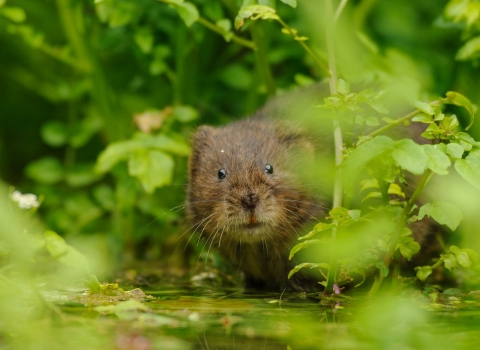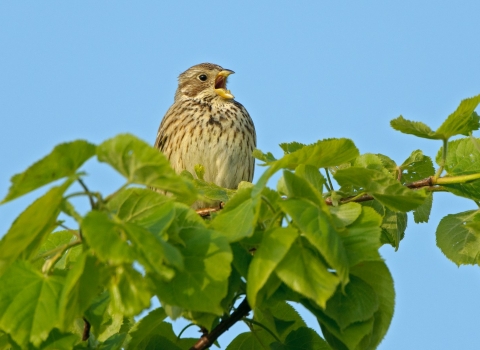Climate change is the biggest threat to our wildlife, and to much of life on earth. It was the primary motivation for Living Landscapes, the Wildlife Trusts’ approach to landscape-scale conservation which we adopted in our development plan in 2000, and which all the Wildlife Trusts adopted in 2003. We see our niche to be helping species to adapt to inevitable climate change; at the same time, working to reduce climate impacts.
We are all now familiar with Extinction Rebellion and the schools’ strike for climate. These are very different approaches from the Wildlife Trusts, but I have a lot of sympathy and respect for them: I understand why people are angry and frustrated about the lack of action in face of a threat far bigger than Brexit or a recession. Seeing that only 43 MPs turned up for the recent parliamentary debate on climate change, the first for two years - which means 600 MPs were absent - does nothing to convince people that politicians are taking the issue seriously.
Extinction Rebellion’s approach is specifically focused on non-violent direct action, but we have many supporters in common and our two approaches complement each other. We concentrate on practical conservation action on the ground, and quiet lobbying behind the scenes: we are science- and evidence- based, and can reason with politicians of any flavour. But we may have better conversations if those politicians are encouraged to listen to us by mass public protest and direct action.
At first I wasn’t sure about the name, Extinction Rebellion. I learnt years ago that negative campaigns and words like ‘extinction’ could be disempowering and put people off - it’s easier to turn away than to face unpalatable truths. For some people it also prompts the challenge - isn’t extinction a natural process?
Up to 30,000 species in Britain face extinction in the next century
But this time it’s justified. It’s been calculated that the average species survives for around 3-5 million years. The ‘background rate’ of extinction, outside of rare mass extinction such as when the dinosaurs disappeared, is thought to be 1-5 species per year globally. It’s estimated that we are currently losing species at 1,000 to 10,000 times that rate.
If you prefer to bring it closer to home: there are around 60,000 species living in Britain today, so we would expect one to become extinct every 50 years. Globally, the worst predictions are now that 30-50% of all species could be extinct by the middle of the century (Thomas et al., 2004). This extrapolates to up to 30,000 species in Britain facing extinction in the next century, instead of the predicted 2 species at the natural background rate! That’s a lot to be angry about.
Sources:
State of nature, 2013, report published by RSPB on behalf of a consortium of 25 conservation and research organisations. 89 pp. and appendices.
Thomas, C. D., A. Cameron, R. E. Green, M. Bakkenes, L. J. Beaumont, Y. C. Collingham, B. F. N. Erasmus, M. Ferreira de Siqueira, A. Grainger, Lee Hannah, L. Hughes, Brian Huntley, A. S. van Jaarsveld, G. F. Midgley, L. Miles, M. A. Ortega-Huerta, A. Townsend Peterson, O. L. Phillips, and S. E. Williams. 2004. Extinction risk from climate change. Nature 427: 145–148.



